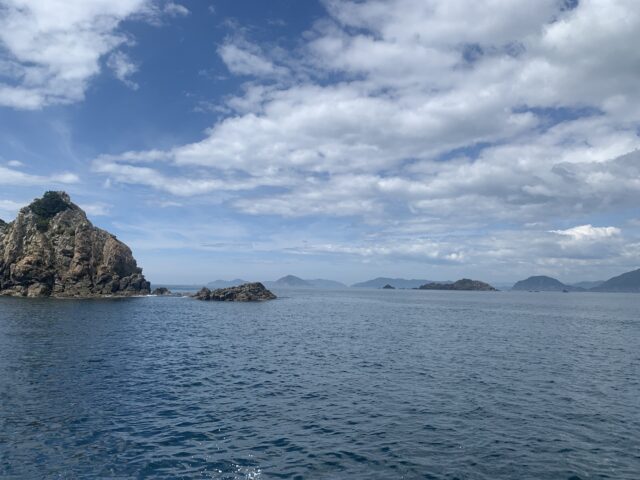This article originally appeared in the November 2022 issue of CONNECT.
Amy Ratcliffe (Ehime)
Ehime is quite the rural location in Japan; places take longer to travel to, but I’m thankful for the transport connections that are available. I have lived in Southern Ehime for almost a year, but it was only a couple of weeks ago that I learnt about Takegashima, a small island in Tsushima, a coastal town located to the south of Uwajima city in Southern Ehime. The teachers at my school spoke of Takegashima, as one of them had previously worked at the elementary school on the island. He had very fond memories of the place and was very well thought of there: when it was time to move away, the residents tied ribbons to his boat as it departed, to thank him. He commented that he felt warm, happy feelings and had long-lasting memories from his time at Takegashima.

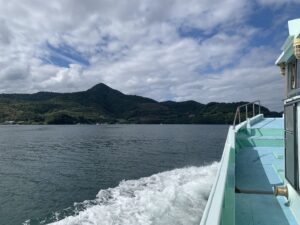
The island is about a twenty minute boat ride from Tsushima. The boat ride provides beautiful views whichever way you face and the water is crystal clear. I learnt that there are only ten people currently living on the island. There are no shops, no convenience stores and no vending machines. I wondered how the people on the island were able to acquire necessities, only to discover that each person owns their own boat and has to sail back and forth to Tsushima to get goods. This is the same if the residents need to see a doctor or go to the hospital; it’ll take a long time, which is a concern during an emergency.
While there are currently ten people living on the island, about thirty years ago this was not the case. Around 100 people lived on Takegashima at that time. While this is still a very small number, the island was bustling: festivals were held and people from nearby towns would travel to the island to attend. From what I could picture, it was a very close-knit community and the people were proud to live on this small island. The people living on Takegashima made their money by pearl farming, a very common and famous practice in Uwajima. The pearl farming industry continues to this day but, unfortunately, with fewer hands to farm, income has become scarcer and the business has suffered.
I was fortunate enough to accompany my school on a field trip to Takegashima. Since there is no longer public transport to the island, the school had to hire boats to take us to the island and back. Our job for the day was to tidy the island and enjoy listening to the stories of the people that live there. We set off early with our cleaning supplies and bento and boarded the boats. The island was beautiful, with mountains making up the majority of the land, followed by a small row of houses, most of which are now uninhabited.

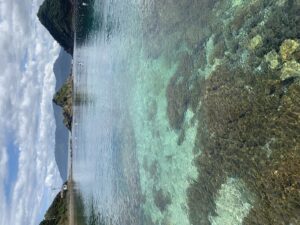
There are no shops, no convenience stores and no vending machines.
The island has one elementary school. This school, however, has been shut down for a number of years. When we arrived, we had the opportunity to tour the school. A lot of the surrounding buildings were uninhabited, but you wouldn’t know from looking at them on the outside. They remained untouched, loose papers bound together, posters still on the walls, delicate cups and plates neatly stacked, as if the owner would soon return. I really enjoyed seeing these places stuck in time—they gave me a weird, indescribable feeling. They had an atmosphere which reminded me of the concept of time capsules: the preservation of a memory from the time it was created—small anecdotes from magazines, newspapers, and posters on the walls that dated from 2016-2017. It was strange to experience, especially as these relics predated coronavirus, too.
The students and I cleaned the elementary school. I helped students reach the higher windows and then dusted the tables. We found many insects in the school, mainly funamushi (small bugs with several legs—they reside near the sea and scurry away very quickly, much to the students’ terror!) and cockroach carcasses. In the teachers room, I found spiders that were so chunky I initially mistook them for crabs! Takegashima is home to several other creatures as well, including feline friends and a wide variety of fish. We were able to spot many different coloured fish in the clear waters at the pier. Striking reds and blues caught our eyes, as well as the occasional jellyfish and one rather intimidating grey, lumpy fish. It seems the wildlife here has thrived and become a sanctuary for many other living animals.
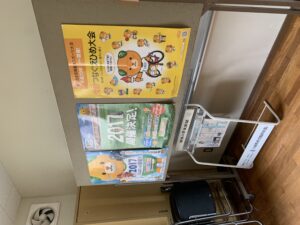
Despite the declining population, the people who live on the island still keep the school open to use as a work space. The computers are still functional, and the library is fully stocked. The school hall has two taiko drums and I believe the hall itself is used as a meeting space for residents. There are also still drawings and writing on the blackboards, and I wondered how long ago the pictures were drawn. We ate our lunch in the school hall, then took a walk around the island. It was so quiet that I instantly felt relaxed. The students all seemed very calm, too. I wished that the island was more easily accessible.
While I understand the downside of living in such a remote space, I felt sad for this almost forgotten island. It was certainly very peaceful; I walked to the pier and spent some time staring out at the ocean. One of my favourite things is the sound of the sea, so listening to the sea whilst feeling the gentle sea breeze on my skin gave me the ultimate comfort.
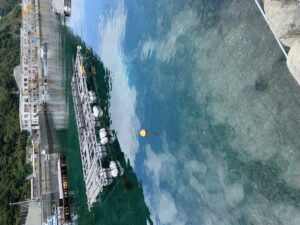
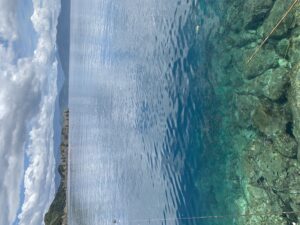
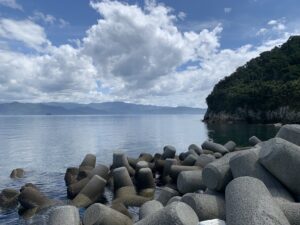
I am very grateful to have had the opportunity to travel to Takegashima, and I cannot help but wonder what will become of the island in the next 20-30 years. I hope it is not forgotten—it is a beautiful island, and very peaceful. It would be nice to move at a slower pace as daily life seems much different there in comparison to everywhere else I’ve been in Japan. It is a small but strong community, and definitely a place to go to relax and enjoy mindfulness.
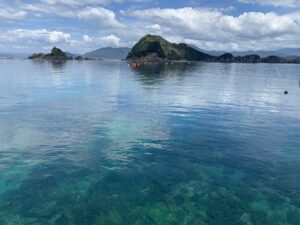
Amy takes any opportunity to leave the house and explore, even if it’s to tour the convenience stores in the city. A big fan of documenting everything, her camera roll is full of beautiful views, onigiri and nonsense.




